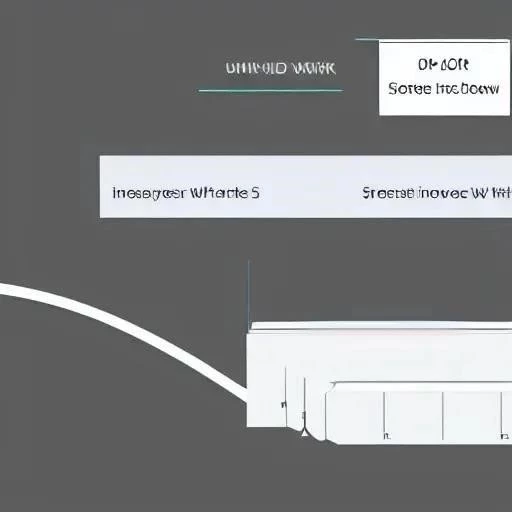Transforming the interior of your home with car siding, also known as shiplap, is a fantastic way to add rustic charm and visual interest. Car siding offers a unique alternative to traditional drywall, providing a textured and warm aesthetic. Installing car siding on interior walls might seem daunting, but with careful planning, the right tools, and a bit of patience, it’s a manageable DIY project that can dramatically enhance your living space. The beauty of car siding lies in its versatility, fitting seamlessly into various design styles, from farmhouse to modern.
Before diving into the installation process, thorough preparation is essential. This involves several key steps:
- Measure your walls: Accurately measure the height and width of the walls you plan to cover. This will help you determine the amount of car siding you’ll need. Factor in extra material (at least 10%) to account for cuts and waste.
- Acclimatize the siding: Allow the car siding to acclimate to the room’s humidity for several days before installation. This will prevent warping or cracking after it’s installed.
- Prepare the wall surface: Ensure the wall surface is clean, dry, and free of any loose debris. Remove any existing wallpaper or damaged paint. Consider using a primer to improve adhesion.
- Locate studs: Use a stud finder to locate the wall studs. Mark their locations clearly, as you’ll need to nail or screw the siding into them for a secure hold.
Now that you’ve prepared your materials and the walls, it’s time to begin the installation. Always prioritize safety by wearing appropriate eye and ear protection.
- Start with the bottom row: Begin installing the car siding at the bottom of the wall, ensuring it’s level. Use a level to check each piece as you go. A slight imperfection at the bottom will be magnified as you move up the wall.
- Secure the siding: Use a nail gun or screws to attach the car siding to the wall studs. Angle the fasteners slightly to ensure a secure hold. If using nails, pre-drill pilot holes to prevent splitting the wood.
- Overlapping/Interlocking: Car siding typically has a tongue-and-groove or shiplap design, allowing the pieces to interlock or overlap. Ensure a tight fit between each piece.
- Cutting and Fitting: Use a saw to cut the siding to fit around windows, doors, and other obstacles. A miter saw is ideal for making precise cuts.
- Continue Upwards: Continue installing the siding row by row, working your way up the wall. Stagger the seams for a more visually appealing look.
To achieve a professional-looking installation, consider these tips:
- Use a spacer: A small spacer (like a coin or a piece of cardboard) can help maintain consistent spacing between the boards, especially with shiplap siding.
- Caulk the seams: Caulk any gaps between the siding and trim or corners. This will create a clean, finished look and prevent drafts.
- Filling nail holes: Use wood filler to fill any nail holes or imperfections. Sand smooth when dry.
- Painting or staining: Once the installation is complete, you can paint or stain the car siding to your desired color.
After the car siding is installed, take some time to add the finishing touches that will truly elevate the look of your space. This may include adding trim around windows and doors, installing baseboards, and applying a coat of paint or stain. The result will be a beautiful and unique interior wall that you can be proud of. Remember that to install car siding properly, you need patience and to take your time. With a little effort, you can completely transform a room.
Transforming the interior of your home with car siding, also known as shiplap, is a fantastic way to add rustic charm and visual interest. Car siding offers a unique alternative to traditional drywall, providing a textured and warm aesthetic. Installing car siding on interior walls might seem daunting, but with careful planning, the right tools, and a bit of patience, it’s a manageable DIY project that can dramatically enhance your living space. The beauty of car siding lies in its versatility, fitting seamlessly into various design styles, from farmhouse to modern.
Preparing for Installation
Before diving into the installation process, thorough preparation is essential; This involves several key steps:
- Measure your walls: Accurately measure the height and width of the walls you plan to cover. This will help you determine the amount of car siding you’ll need. Factor in extra material (at least 10%) to account for cuts and waste.
- Acclimatize the siding: Allow the car siding to acclimate to the room’s humidity for several days before installation. This will prevent warping or cracking after it’s installed.
- Prepare the wall surface: Ensure the wall surface is clean, dry, and free of any loose debris. Remove any existing wallpaper or damaged paint. Consider using a primer to improve adhesion.
- Locate studs: Use a stud finder to locate the wall studs. Mark their locations clearly, as you’ll need to nail or screw the siding into them for a secure hold.
The Installation Process
Now that you’ve prepared your materials and the walls, it’s time to begin the installation. Always prioritize safety by wearing appropriate eye and ear protection.
- Start with the bottom row: Begin installing the car siding at the bottom of the wall, ensuring it’s level. Use a level to check each piece as you go. A slight imperfection at the bottom will be magnified as you move up the wall.
- Secure the siding: Use a nail gun or screws to attach the car siding to the wall studs. Angle the fasteners slightly to ensure a secure hold. If using nails, pre-drill pilot holes to prevent splitting the wood.
- Overlapping/Interlocking: Car siding typically has a tongue-and-groove or shiplap design, allowing the pieces to interlock or overlap. Ensure a tight fit between each piece.
- Cutting and Fitting: Use a saw to cut the siding to fit around windows, doors, and other obstacles. A miter saw is ideal for making precise cuts.
- Continue Upwards: Continue installing the siding row by row, working your way up the wall. Stagger the seams for a more visually appealing look.
Tips for a Professional Finish
To achieve a professional-looking installation, consider these tips:
- Use a spacer: A small spacer (like a coin or a piece of cardboard) can help maintain consistent spacing between the boards, especially with shiplap siding.
- Caulk the seams: Caulk any gaps between the siding and trim or corners. This will create a clean, finished look and prevent drafts.
- Filling nail holes: Use wood filler to fill any nail holes or imperfections. Sand smooth when dry.
- Painting or staining: Once the installation is complete, you can paint or stain the car siding to your desired color.
Finishing Touches
After the car siding is installed, take some time to add the finishing touches that will truly elevate the look of your space. This may include adding trim around windows and doors, installing baseboards, and applying a coat of paint or stain. The result will be a beautiful and unique interior wall that you can be proud of. Remember that to install car siding properly, you need patience and to take your time. With a little effort, you can completely transform a room.
But let’s not stop there! Once your shiplap sanctuary is complete, consider pushing the boundaries of conventional design. Forget the predictable neutral tones! What about a vibrant splash of teal, reminiscent of hidden lagoon waters, or a bold, unexpected mustard yellow that radiates sunshine even on the gloomiest days? Think about incorporating unexpected textures. Imagine woven seagrass panels interspersed between the car siding, creating a tactile and visually intriguing landscape. Or, consider embedding small, strategically placed mirrors within the siding, reflecting light and adding a touch of playful illusion.
Beyond the Expected: A Design Symphony
The true magic happens when you treat your car siding wall as a canvas for personal expression. Instead of simply painting it, consider a mural! A sweeping landscape, an abstract explosion of color, or even a whimsical, cartoon-inspired design can turn your wall into a breathtaking focal point.
Unleash Your Inner Artist
Let’s delve even deeper into the realm of unconventional design ideas:
- Illuminated Siding: Embed LED strip lights behind select pieces of the car siding, creating a soft, ambient glow that highlights the texture and adds a touch of mystery. You can even use color-changing LEDs to set different moods.
- Living Wall Integration: Incorporate vertical planters directly into the car siding structure. Plant cascading greenery that spills down the wall, blurring the lines between interior and exterior spaces. Think miniature ferns, trailing ivy, or even edible herbs for a functional and beautiful design.
- Repurposed Materials: Instead of traditional car siding, consider using reclaimed wood planks or even salvaged doors and windows. This adds a unique, eco-friendly touch and tells a story of sustainability.
Ultimately, installing car siding is just the beginning. It’s a blank slate upon which you can paint your wildest design dreams. Don’t be afraid to experiment, to break the rules, and to create a space that truly reflects your unique personality and style. The only limit is your imagination. So, grab your tools, unleash your inner artist, and prepare to transform your interior walls into breathtaking works of art!


